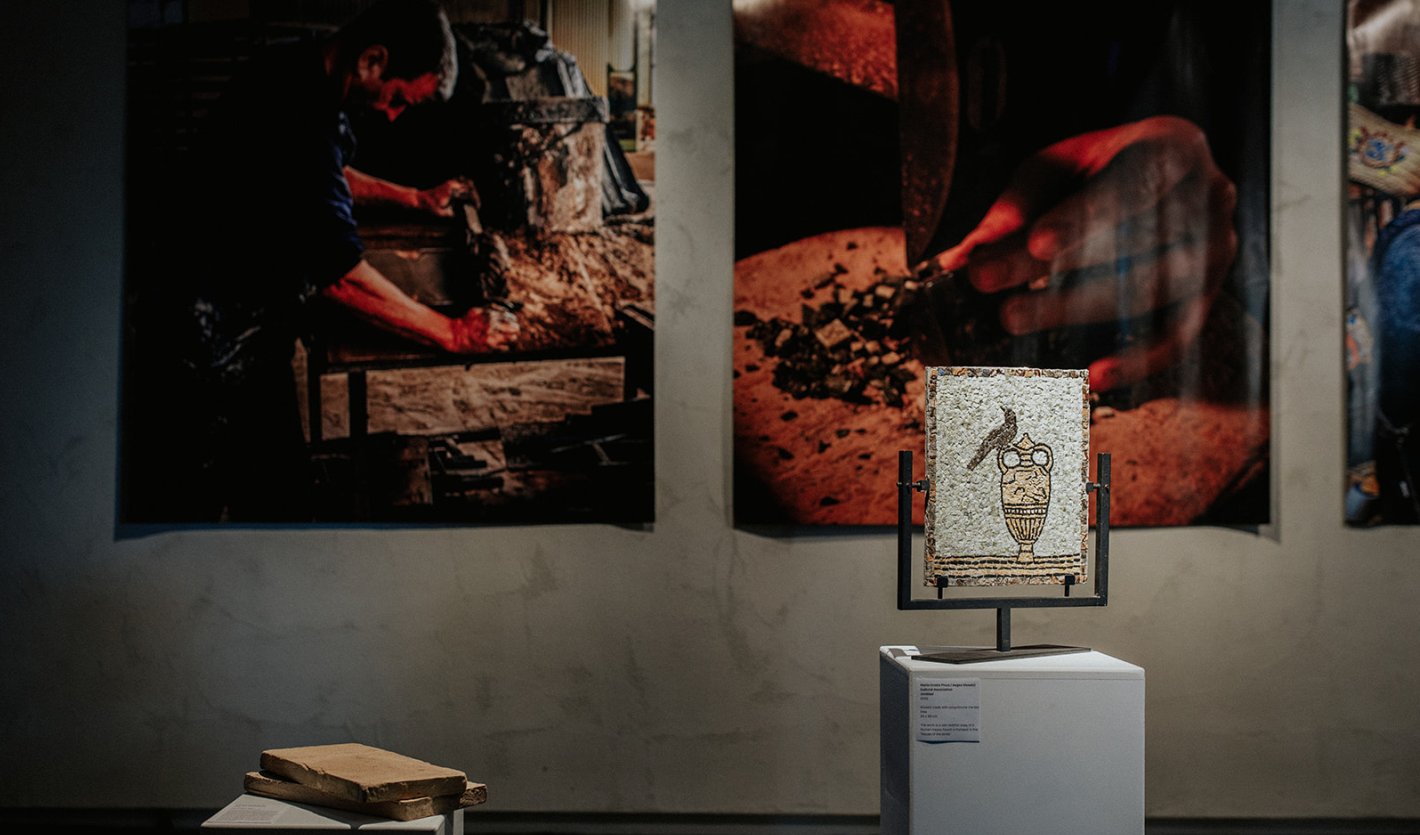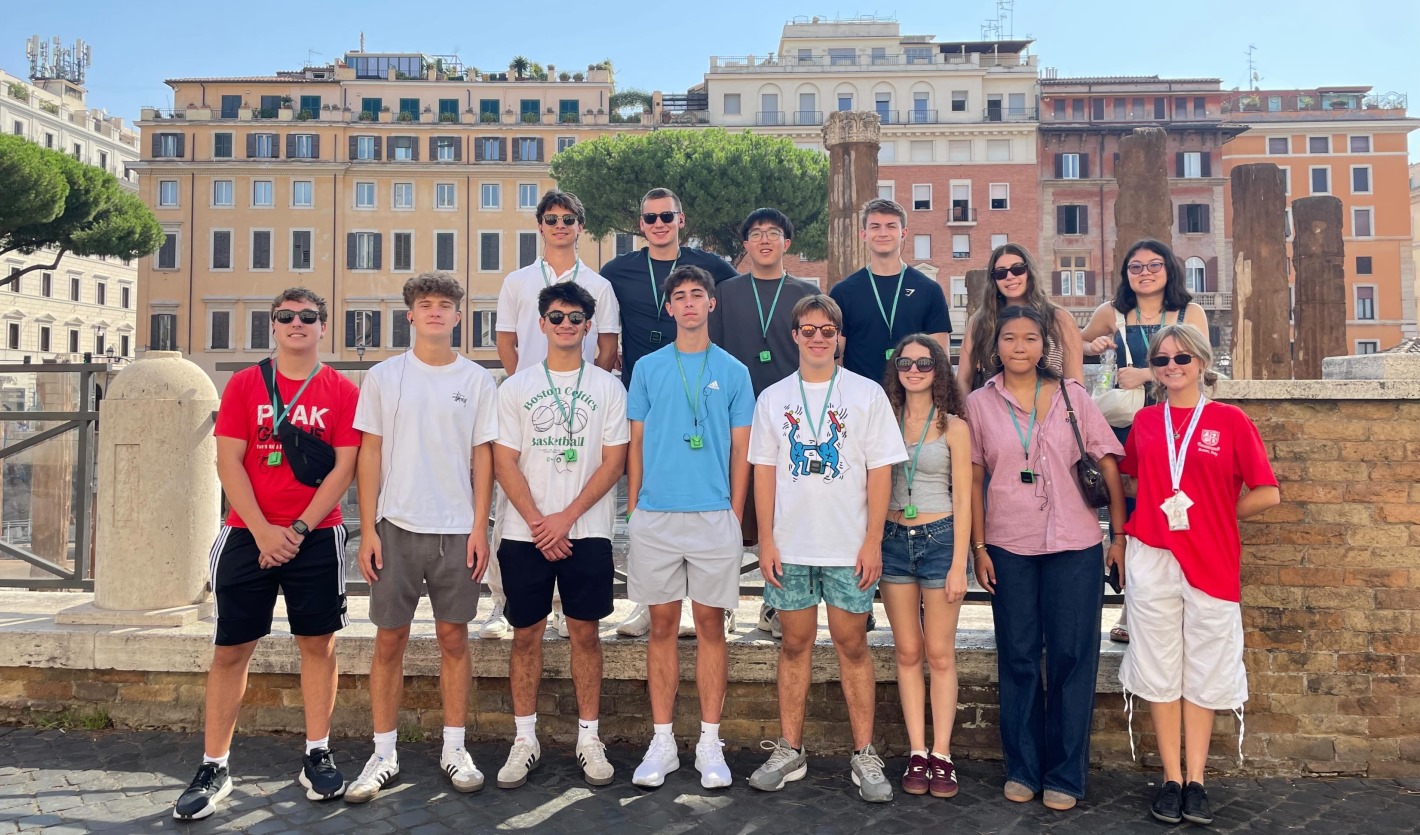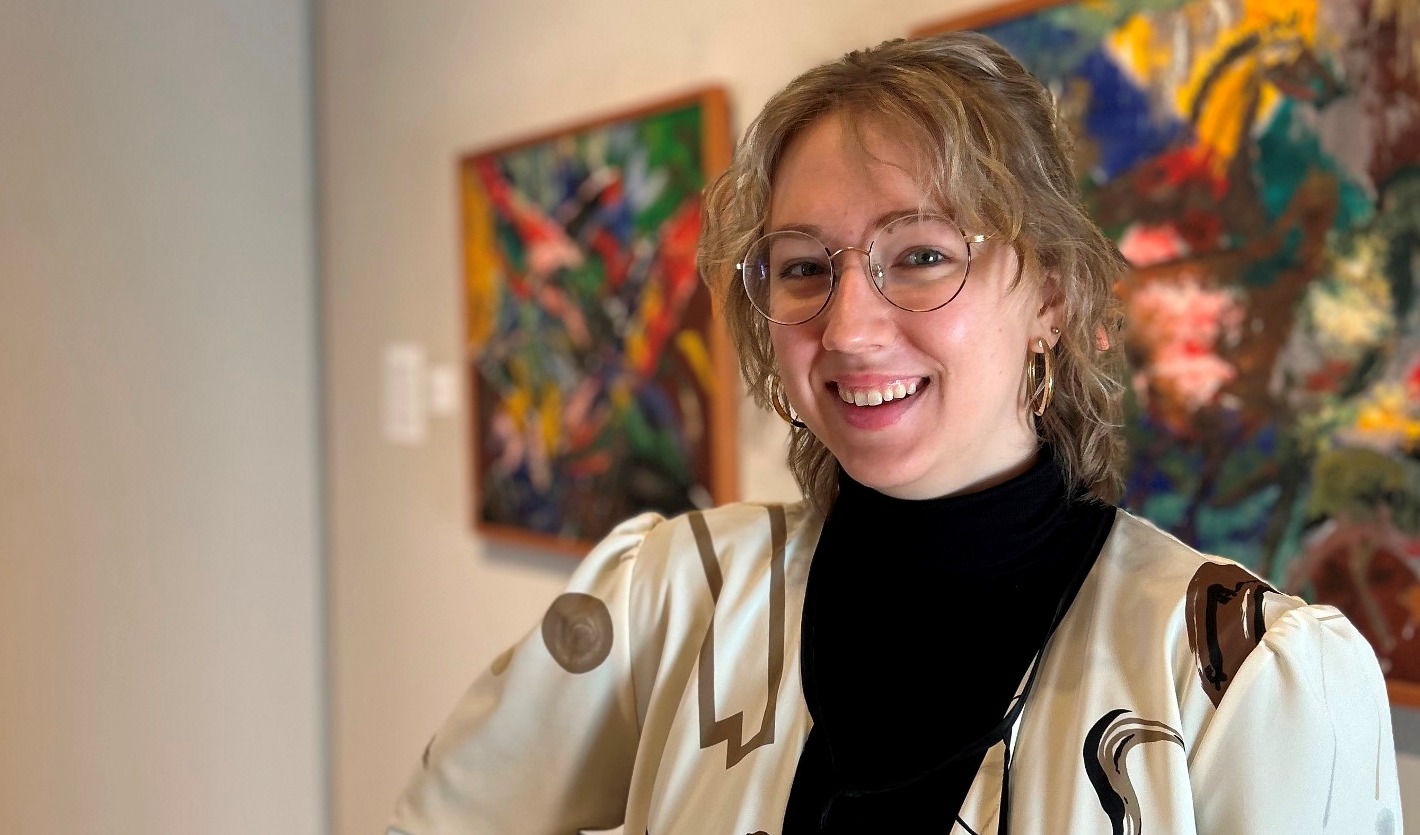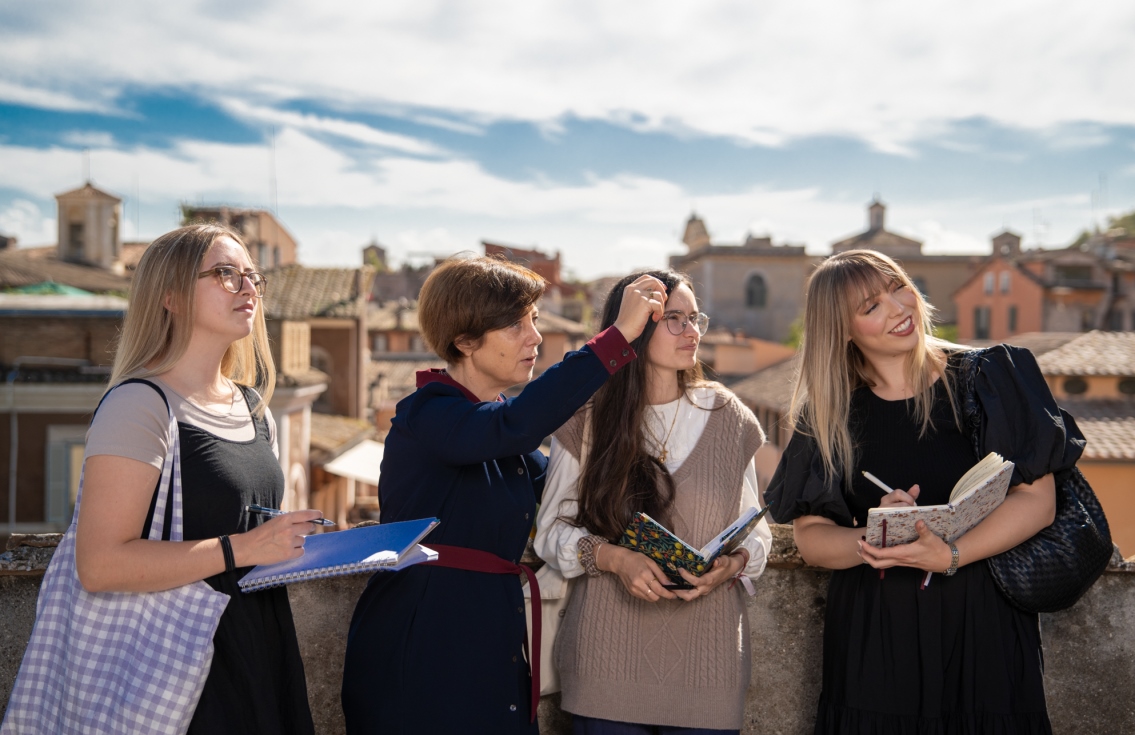
For art history, there is no place like Rome. Earn your MA degree in Art History at JCU, a place of discovery but also a lifelong intellectual home.
JCU’s Master of Arts (MA) is the first graduate degree program in art history based entirely in Rome offered by a U.S. accredited university. The program focuses on student research, methodological innovation, and faculty mentorship. You will study in one of the world’s richest art-historical environments: a city with more than 2000 years of uninterrupted artistic culture, with unparalleled impact on the history of art and architecture.
See and experience some of the greatest artwork ever created while delving into the artistic traditions of Italy and the Mediterranean, from antiquity to the present. Our courses go beyond the classroom: explore a vast array of museums, archaeological sites, churches, urban spaces, galleries, libraries, and archives. Many courses also include excursions to other culturally relevant European cities such as Milan, Venice, Florence, Athens, Paris, and London.
Knowledge and understanding
Analytical and research skills
Professional and transferrable skills
You can complete the Master's program in either about 15 months of full-time study or over the course of two academic years, with the option of a second internship. The two-year timetable is mandatory if you plan on receiving U.S. student loans, as you will need to maintain your full-time student status during the summer term. The more intensive, 15-month option is possible for those with a strong academic record and substantial background in art history.
The Art History Master's program begins with a Foundation Phase that lays the groundwork for advanced research and professional practice through eight courses and three independent components. Completing this requirement leads to M.A. Candidacy and the Thesis Phase, during which you complete your M.A. Thesis, Thesis Colloquium, and Professional Experience.
Foundation Courses (24 Credits)
Thesis and Professional Experience (12 Credits)
Explore the courses of the M.A. program.
Find a detailed list of key dates for each semester of your graduate education.
JCU offers several options to help you meet your educational goals through a focused, merit-based scholarship program. All program applicants are automatically considered for our scholarships and grants. In addition, US students may be eligible for student loan options, as well as veteran and military family benefits, to help pay for school.
You will take classes and study in JCU's Center for Graduate Studies. The building hosting the center is a historic site itself, dating back to 1495, when Cardinal Alessandro Farnese, the future Pope Paul III, built a small villa on the site. In the first half of the 19th century, it passed on to the powerful Bourbon family. Since 1934, it has been part of the adjacent Accademia dei Lincei, the oldest academy in the world dedicated to the study of the humanities and natural sciences. Galileo Galilei, Enrico Fermi, and Vito Volterra were among its members
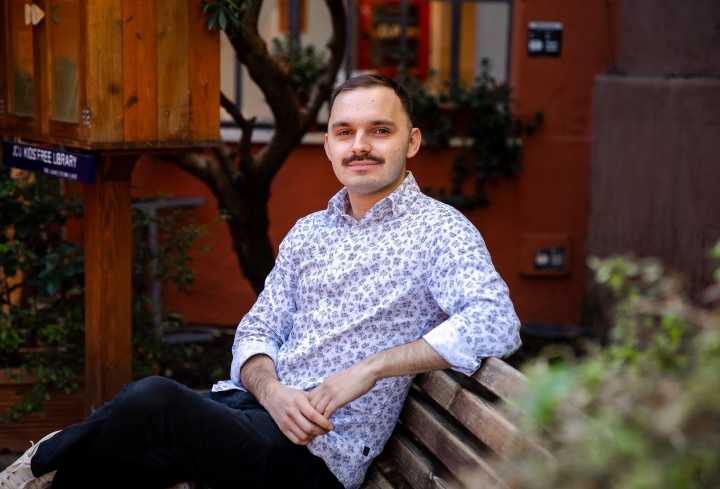
The MA in Art History degree serves as a foundation for art history careers in museums, galleries, schools, art consultancies, and publishing houses, and can provide career enhancement in areas where research skills and expertise in Roman visual culture are advantageous. These careers include: cultural heritage management and art conservation, library and information science, historical fiction and script writing, and scenography and game design.
The program can also prepare you for doctoral (Ph.D.) level study of art history, or provide continuing education for teachers of art history, history, classical studies, and related subjects.
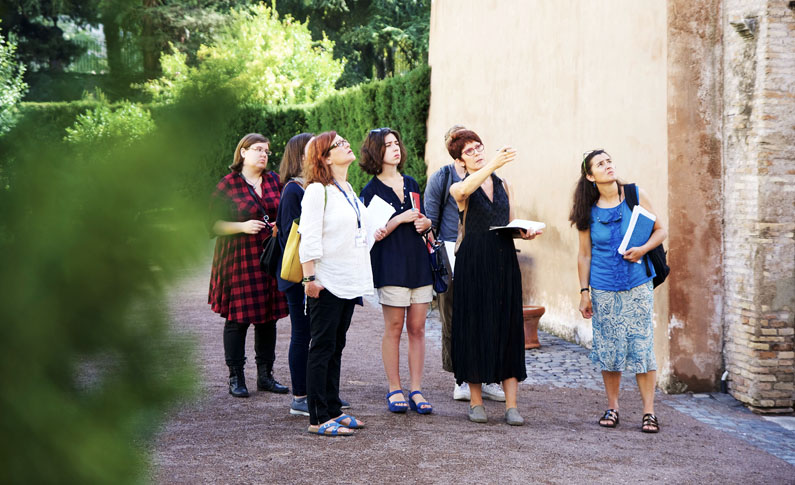
Still have questions? Explore the topics below for more detailed information on what you can expect from your JCU Master's education.
The Foundation Year of your graduate education is comprised of:
After sitting for your Master's exam at the end of May, the remainder of the summer (through late August) can be devoted to coursework, thesis research, research-related travel, internships, supplementary language training, or other professional or educational activities. As an M.A. student, you will have access to the Frohring Library and other university facilities through the summer.
This culminating phase of the degree program has three elements:
Graduate Research Seminars are research-intensive colloquia focused on specialized themes devised to stimulate original student research. They begin with the reading of a discrete body of scholarly sources and the examination of primary source material and proceed to the development of a focused research project, presentation, and paper by each seminar participant. Weekly seminar meetings are devoted to analyzing readings; examining art and other primary materials in museums, libraries, or laboratories; and presenting and discussing the results of individual research.
Topics courses structure the acquisition of visual and historical information and research skills pertinent to specific artistic styles, media, genres, artists, or critical phenomena. Their formats vary. Most involve some combination of lectures, guided readings, site visits, and the researching and writing of a substantial paper.
Sample course themes include Ancient Roman and Mediterranean mural painting; illuminated manuscripts of Late Antiquity and the Middle Ages; Roman palaces and villas; and the valorization of contemporary visual culture.
M.A. students are required to take two Methodological Foundations Courses:
JCU is an American university, so your primary courses and coursework will be conducted in English. However, before registering for the Master’s thesis, you must demonstrate the ability to read Italian, French, or German at the B2 (upper intermediate) level or higher in the Common European Framework of Reference for Languages (CEFR). This component is prepared independently and can be satisfied by passing a language exam administered by the John Cabot University Foreign Language Resource Center or by presenting a B2-level certificate from an approved language school or testing service (CILS, DELF/DALF, etc.).
Although language courses do not count toward the M.A., you may audit courses in Italian or French if you need further language preparation.
If your first language is Italian, French, or German, or you hold a Bachelor's degree or the equivalent from a university where the language of instruction is Italian, French, or German, you are exempt from this requirement.
If you are a European Union (EU) citizen or have an Italian permit of stay (permesso di soggiorno), you are eligible for admission as a part-time student. Part-time students typically take between three and nine credit hours per term and are allowed four years to complete all degree requirements.
Our world-class faculty integrate their expertise and research into the learning experience, delivering research-driven and professionally focused courses while providing personalized academic mentorship.
The JCU's Art History MA program opens doors to remarkable professional opportunities. Alumna Amelia Lancaster secured an internship at Antichità Alberto Di Castro, a prestigious gallery in the heart of Rome. By the end of her internship, Amelia was offered a full-time position.
Lay a strong foundation for your successful career through the Center for Career Services.
